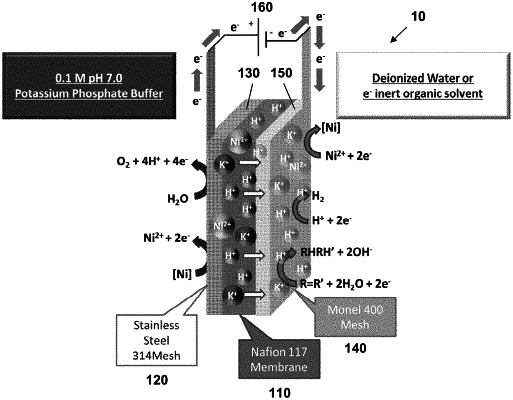| CPC C25B 3/25 (2021.01) [C25B 9/015 (2021.01); C25B 9/19 (2021.01); C25B 11/03 (2013.01)] | 17 Claims |

|
1. An electrolyzer reactor comprising:
(a) a membrane electrode assembly comprising:
(i) a proton exchange membrane (PEM) having a first surface and a second surface opposing the first surface,
(ii) a freestanding first metallic mesh in physical contact with, but not fixedly attached to, the first PEM surface and having electrocatalytic activity for water oxidation and hydrogen ion formation, and
(iii) a freestanding second metallic mesh in physical contact with, but not fixedly attached to, the second PEM surface and having electrocatalytic activity for reduction of one or more organic compounds,
wherein the first metallic mesh and the second metallic mesh are free from catalytic materials thereon, the first metallic mesh and the second metallic mesh are in electrical contact with each other and optionally with a voltage source for driving electrons therebetween, and the second metallic mesh is the only material that is in physical contact with the second PEM surface and that has electrocatalytic activity for reduction of the one or more organic compounds;
(b) a first reaction volume in fluid communication with (i) the first metallic mesh and (ii) the first PEM surface; and
(c) a second reaction volume in fluid communication with (i) the second metallic mesh and (ii) the second PEM surface.
|